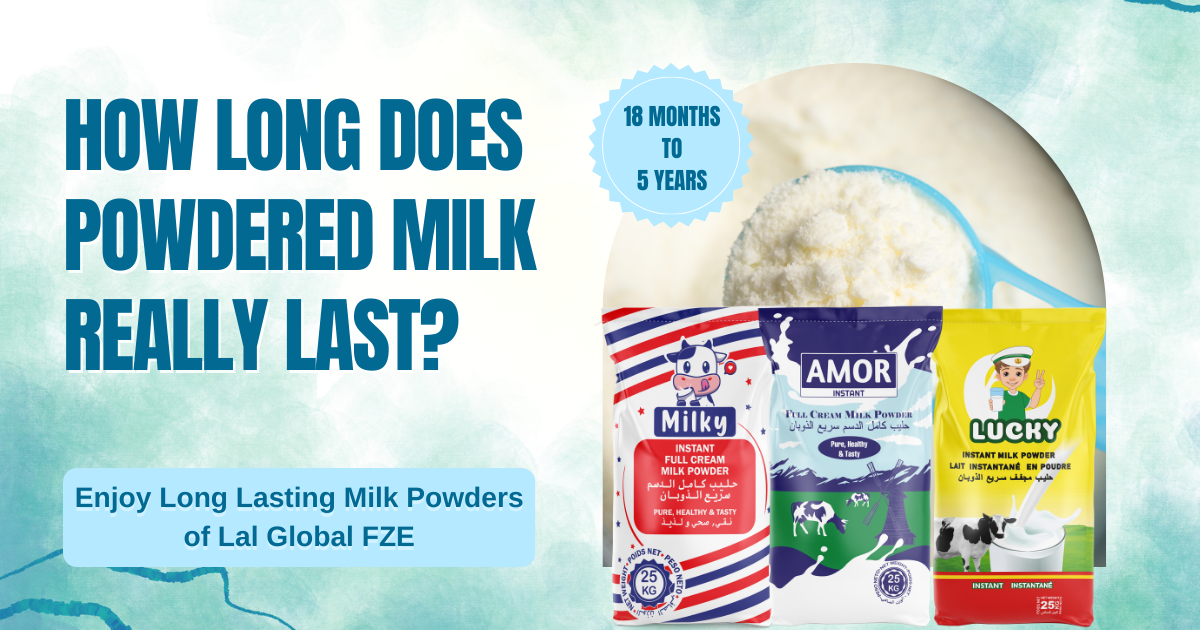How Long Does Powdered Milk Really Last?
Ever wondered how long that carton of powdered milk in your pantry will stay good for? Understanding the shelf life of powdered milk is important for both everyday use and emergency preparedness.
What is Powdered Milk?
Powdered milk, also called dried milk, is regular milk that has had most of the moisture removed. This drying process creates a shelf-stable product that lasts much longer than liquid milk. There are different types of powdered milk available, including:
- Whole Powdered Milk
This type contains all the natural fat found in whole milk.
- Non-Fat Powdered Milk
It has had the fat removed, making it lower in calories and a good choice for those watching their fat intake.
- Instant Powdered Milk
Instant Powdered milk is specially processed to dissolve quickly and easily in water.
Powdered milk is a versatile ingredient that can be used in many ways, such as:
- Baking: It can be used in cakes, cookies, and other baked goods.
- Beverages: You can rehydrate it with water to make milk for drinking or use it in coffee or tea.
- Cooking: It can be added to soups, stews, and sauces to add creaminess.
Shelf Life of Powdered Milk
The good news is that powdered milk has a long shelf life! Generally, unopened packages of powdered milk can last for 18 months to 5 years from the production date. However, this is just a guideline. Several factors can influence how long powdered milk stays fresh:
- Type of Milk
Non-fat powdered milk tends to last longer than whole powdered milk because fat is more prone to spoilage.
- Packaging
Powdered milk that comes in a sealed, airtight container will last longer than milk that has been opened or repackaged.
- Storage Conditions
Heat, light, and moisture can all shorten the shelf life of powdered milk.
Signs That Powdered Milk Has Gone Bad
Even though powdered milk has a long shelf life, it can still go bad eventually. Here are some signs to watch out for
- Lumps or Clumps
Fresh powdered milk should be loose and free-flowing. If it has become clumpy, it may be old.
- Discoloration
Powdered milk should be a light cream color. If it has darkened or turned yellow, it’s best to discard it.
- Off Odor
Fresh powdered milk should have a mild, milky smell. If it has a sour or rancid odor, it’s gone bad.
Storing Powdered Milk for Maximum Shelf Life
To get the longest shelf life out of your powdered milk, follow these storage tips:
- Store it in a Cool, Dry Place
Make sure you store it between 50°F and 60°F (10°C and 15°C). Avoid storing it near heat sources like ovens or stoves.
- Keep it Out of Direct Sunlight
Keeping it out of direct sunlight is one of the factors that helps in safe storage. Because direct light can degrade the quality of powdered milk.
- Use Airtight Containers
Once you’ve opened a package of powdered milk, transfer it to an airtight container, such as a Mylar bag or a metal tin. This will help to protect it from moisture and oxygen, which can cause spoilage.
- Consider Vacuum Sealing
For long-term storage, vacuum sealing your powdered milk can further extend its shelf life.
- Refrigeration is Optional
While not necessary for unopened packages, refrigerating opened powdered milk can help it stay fresh even longer.
How to Test if Powdered Milk is Still Good
If you’re unsure whether your powdered milk is still good, there’s a simple way to test it. Mix a small amount of powdered milk with water according to the package directions. If it dissolves easily and has a normal taste and smell, it’s likely still safe to use.
Using Expired Powdered Milk
While expired powdered milk may not be ideal for drinking, it may still be usable for other purposes. Here are a few ideas:
- Baking
Expired powdered milk can sometimes be used in baking without any problems. The taste or texture may be slightly affected, but it should still be safe to consume.
- Composting
Powdered milk can be added to your compost pile as a source of nitrogen.
- Non-Food Uses
Expired powdered milk can be used for non-food applications, such as making a paste to clean furniture or soothe insect bites (always do a patch test first!).
Conclusion
Powdered milk is a handy pantry staple that can be used for a variety of purposes. By understanding how to store it properly and tell when it’s gone bad, you can ensure that you’re always getting the most out of this versatile ingredient. Remember, unopened powdered milk can last a long time, but it’s still important to store it properly and check for spoilage before using it.
FAQ
Q. Can I use expired powdered milk in an emergency?
In a true emergency, expired powdered milk may be a viable option, especially for cooking. However, it’s important to be aware of the potential risks, such as upset stomach. If possible, it’s always best to use fresh or unexpired powdered milk.
Q. Can I use leftover powdered milk for baking?
Yes, leftover powdered milk can often be used in baking with minimal impact on taste or texture.
Q. How can I tell if my powdered milk is bad?
Look for lumps, discoloration, or an off odor. If unsure, mix a small amount with water – fresh milk should dissolve easily and smell normal.
Q. What’s the best container for storing powdered milk?
Airtight containers like Mylar bags or metal tins are ideal.
Q. Does refrigerating powdered milk extend its shelf life?
Refrigeration isn’t necessary for unopened packages, but it can help opened milk stay fresh longer.
Q. What are some alternative uses for expired powdered milk?
Expired milk can be used for composting or non-food applications (always do a patch test for skin use).

